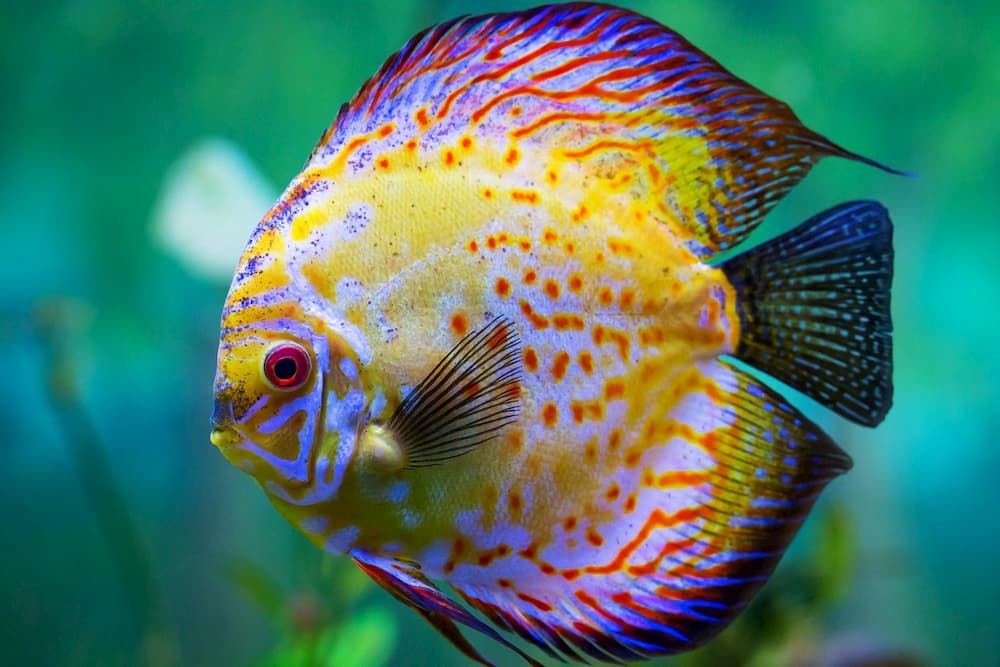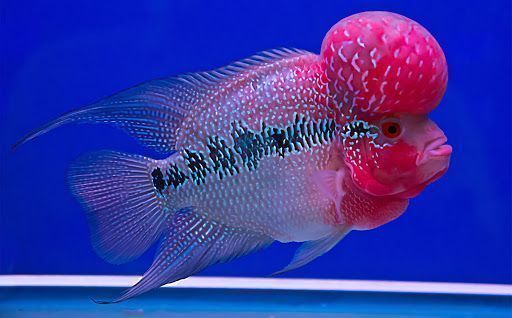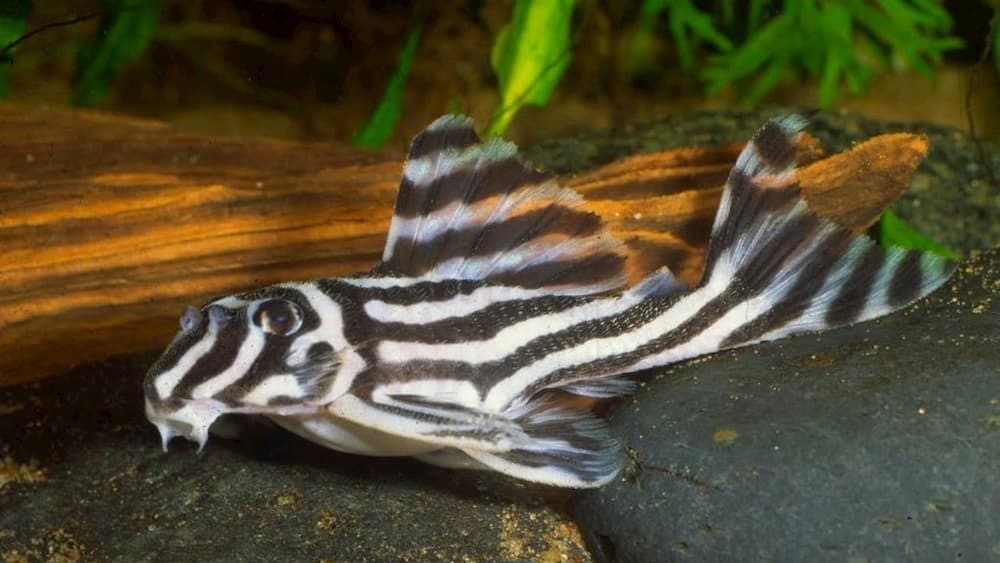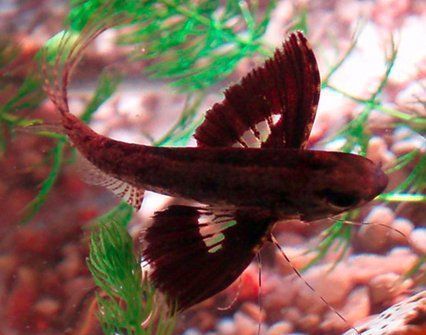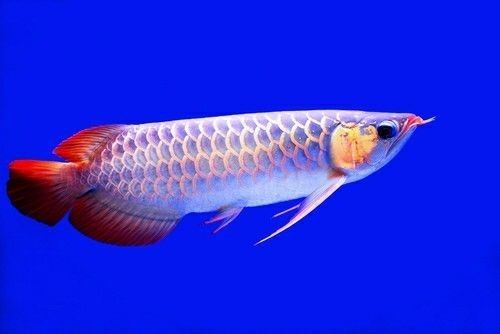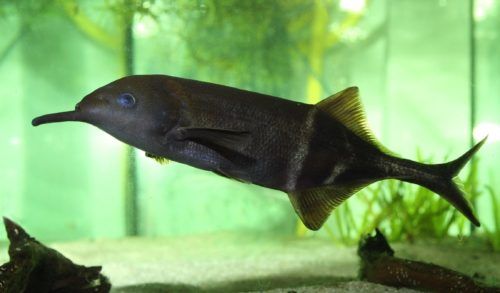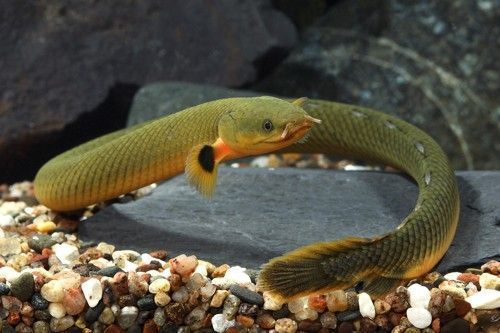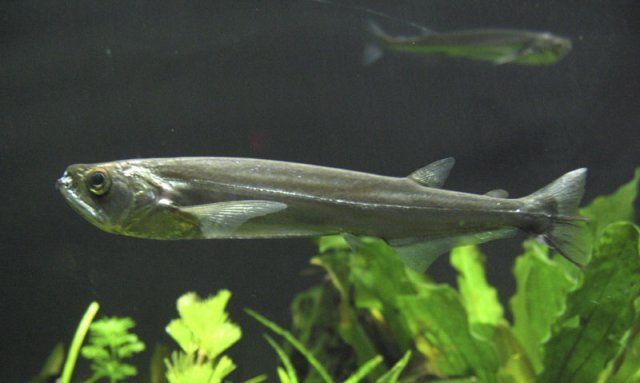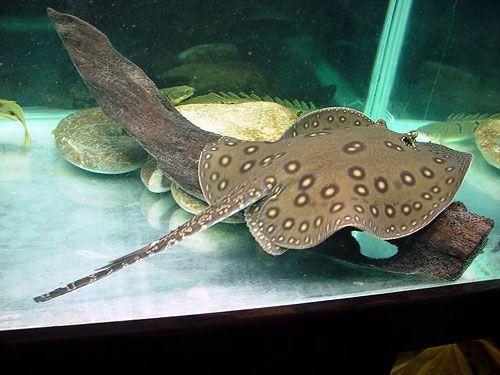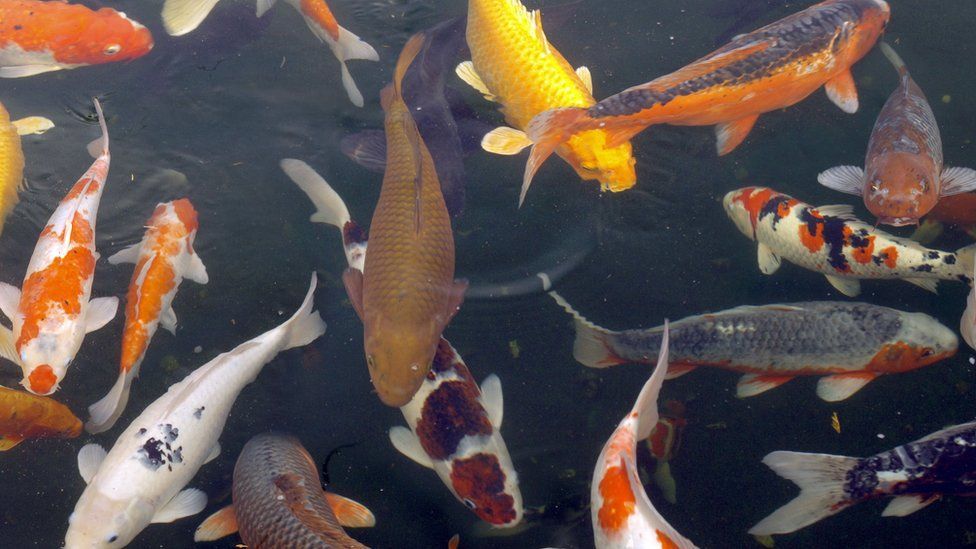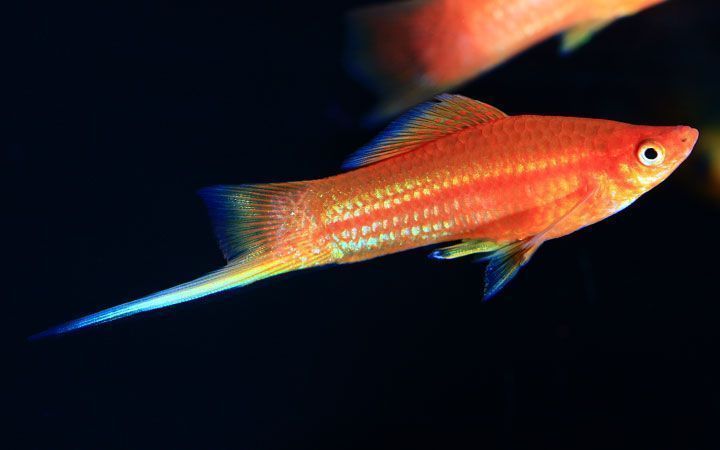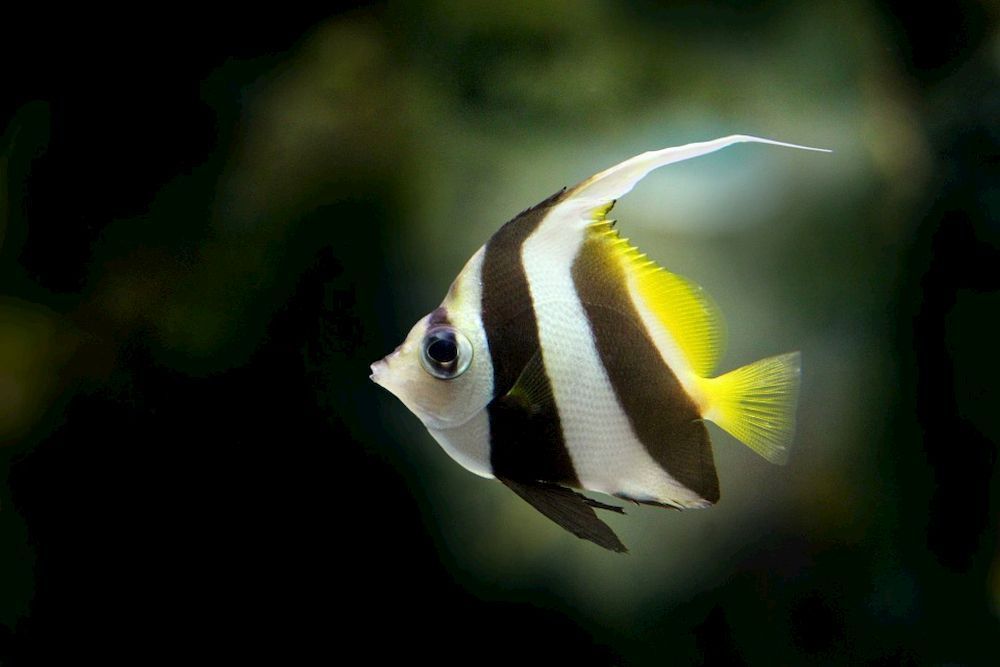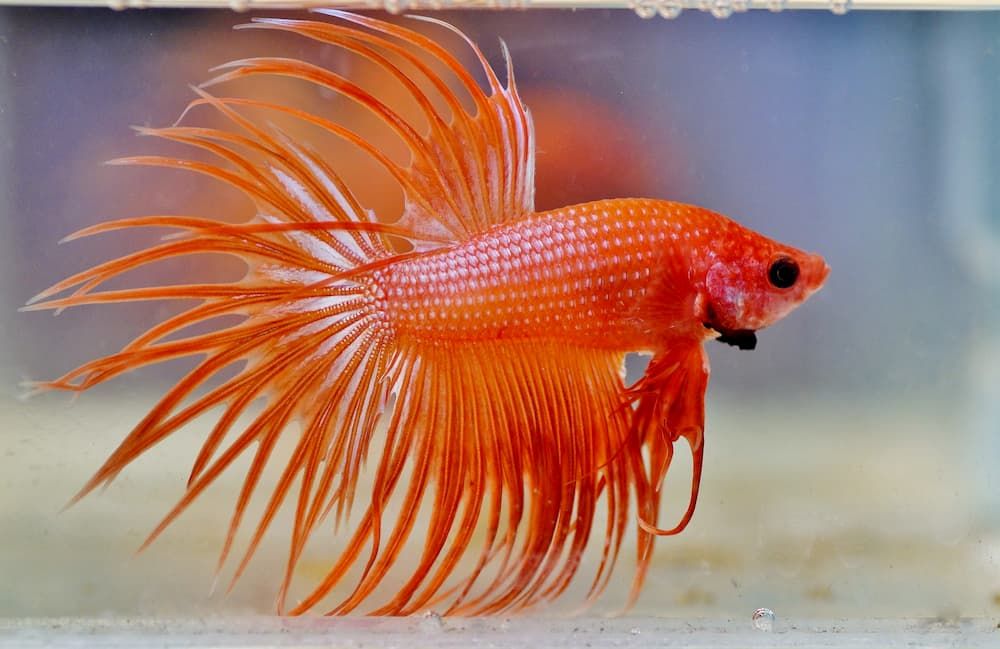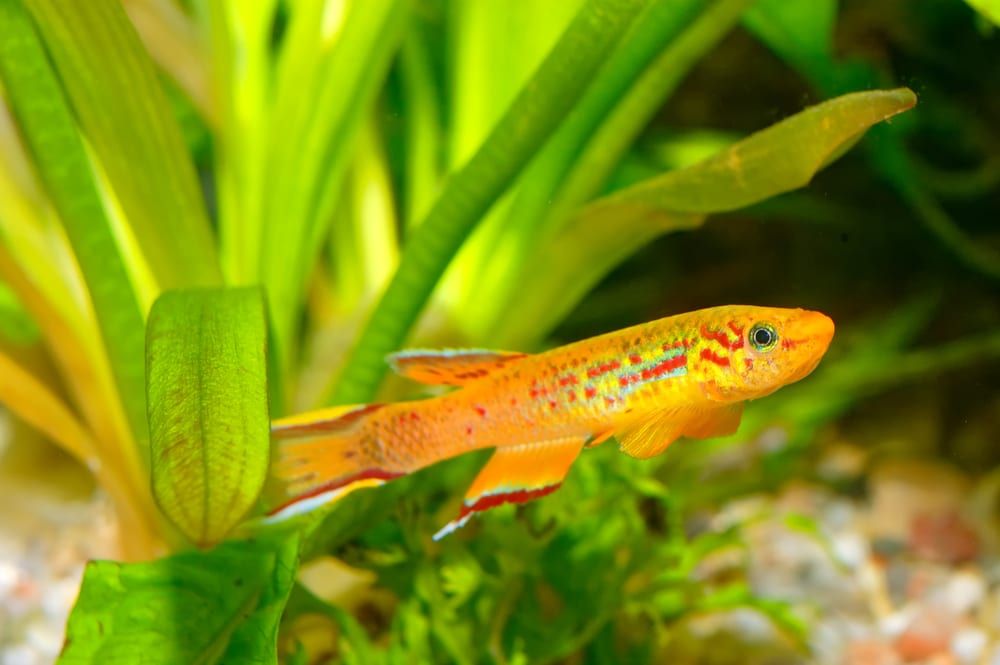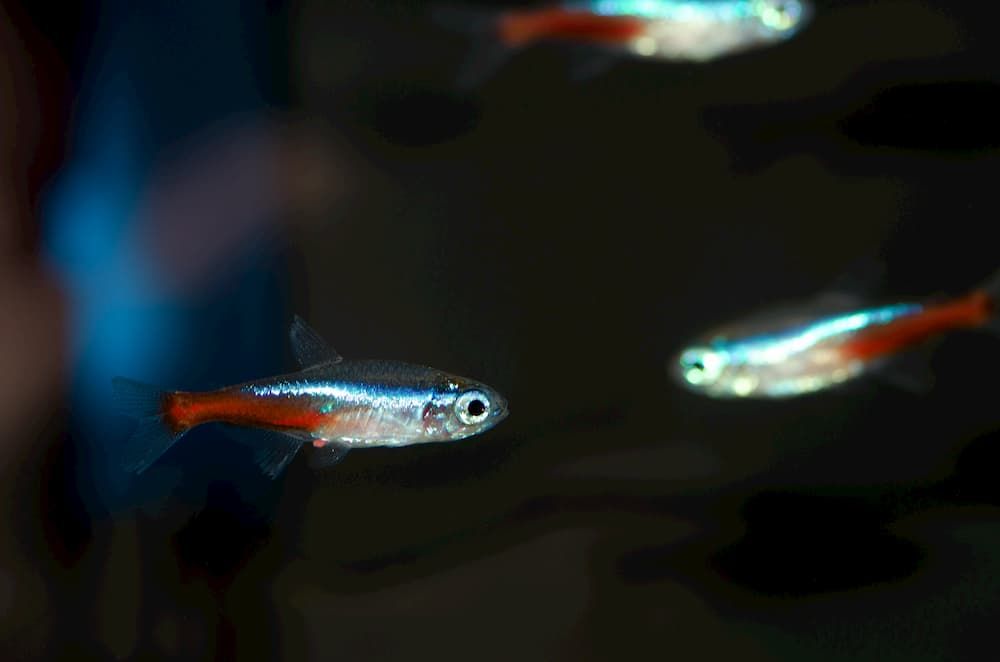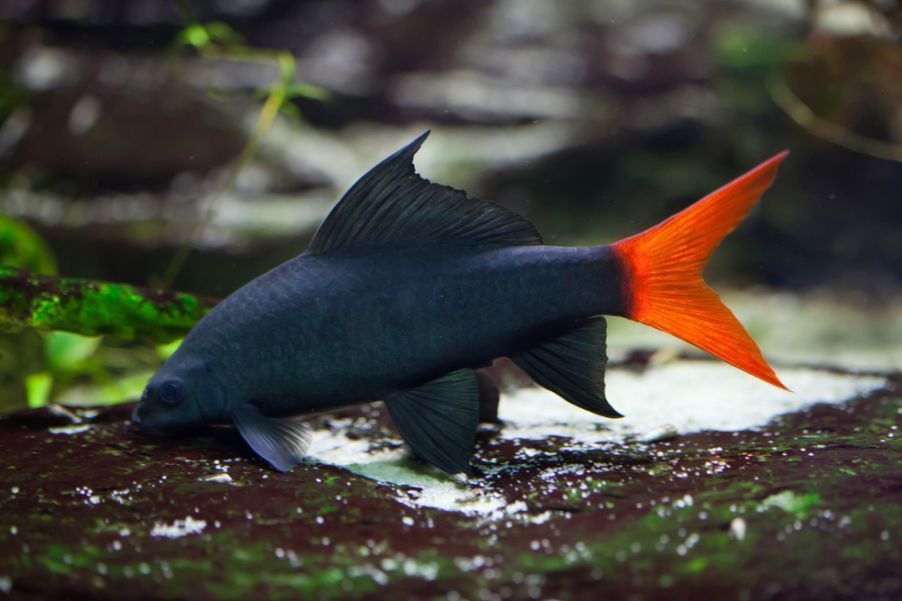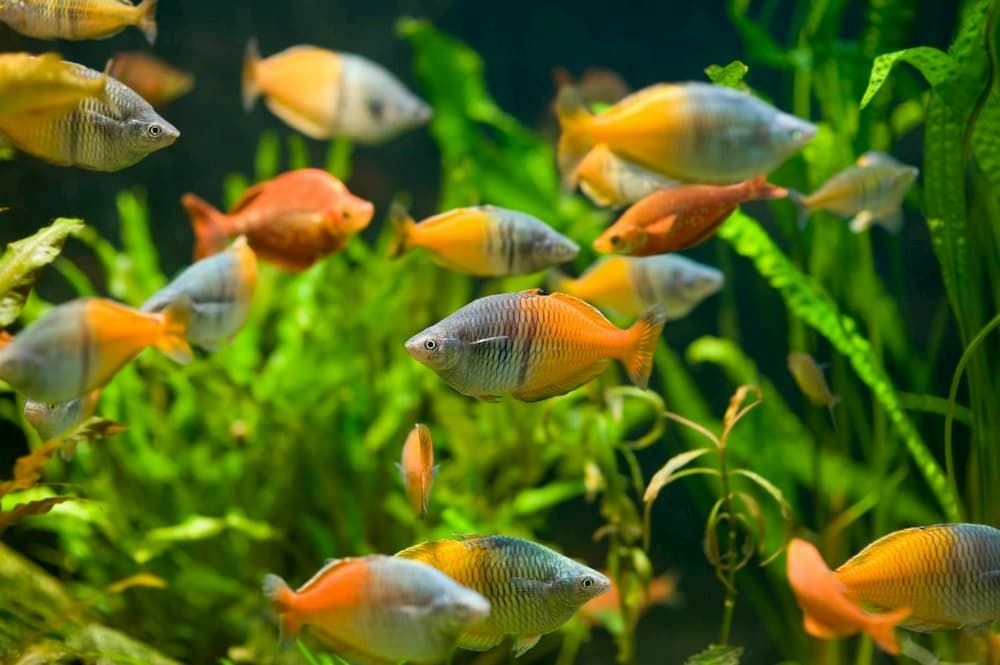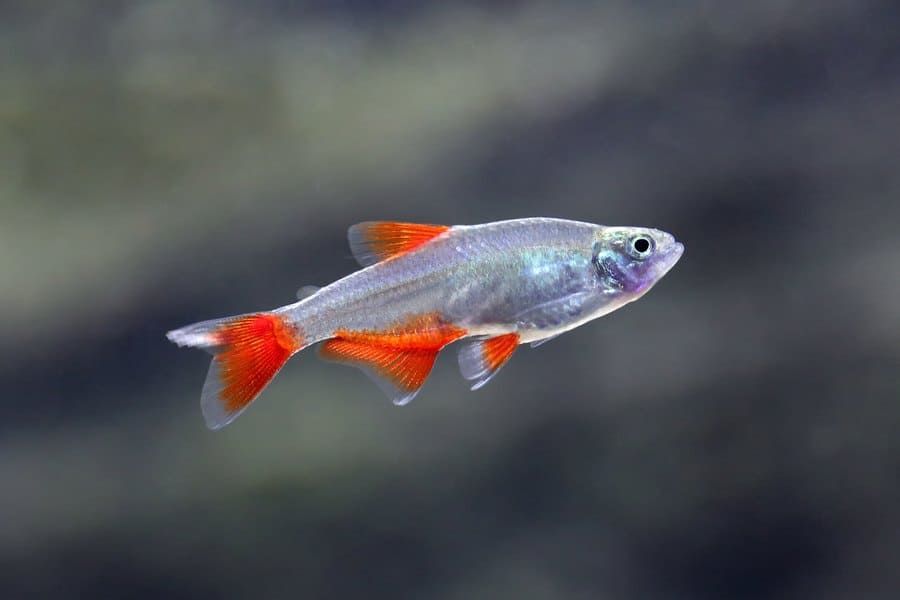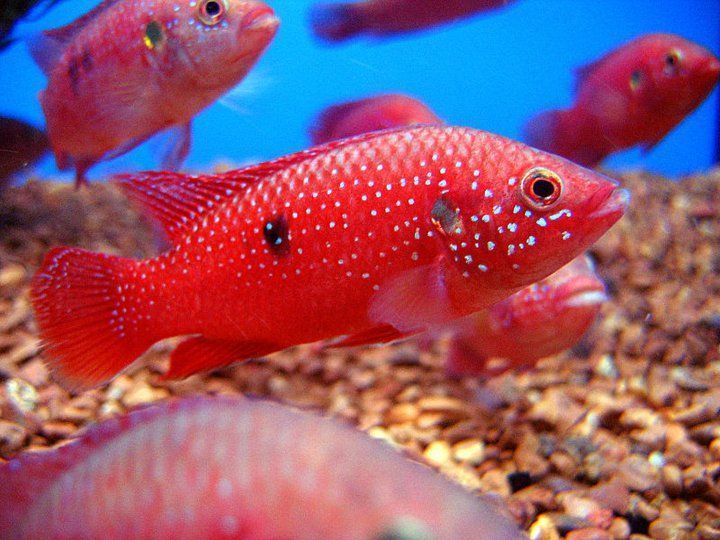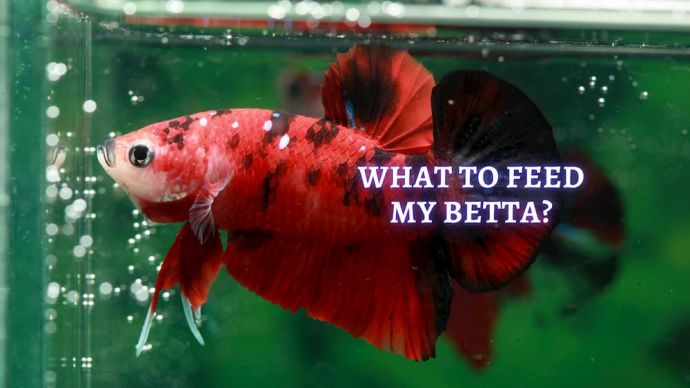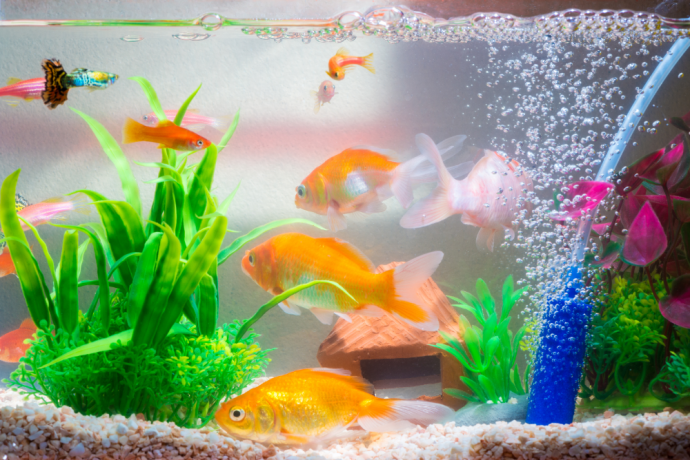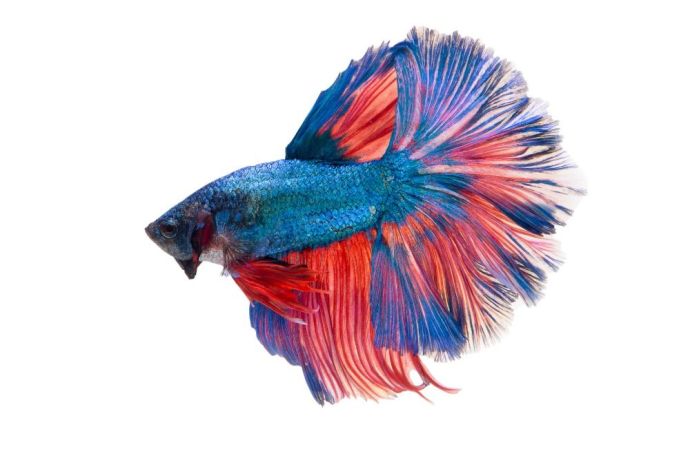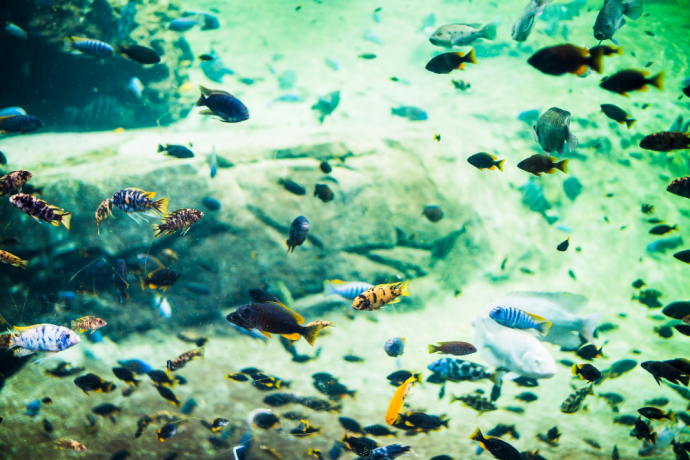TOP 10 Most Exotic Freshwater Fishes
Written by:
Author: Vicki Smirnova
Vicki Smirnova is a professional writer and editor who adores animals and helps readers get along well with their pets. She has been working in digital media for more than 5 years and has great experience writing content about lifestyle, including pets. Vicki specializes in dog health and nutrition, cat feeding, dog training. She is an aquarium lover and is passionate to write about fish care at home. Also, Vicki headed several websites and worked as a news editor.
View all 244 articlesLearn about our editorial process and veterinary review board.
Viewed: 14089
Updated on: 03/13/2023
What does ‘freshwater’ fish mean?
Before taking care of a underwater inhabitants, it is important to know as much about it as possible. The vast majority of most exotic freshwater fish owners will look for freshwater pets to house within tanks or aquariums. These freshwater fish are known as such because they spend either some or all of their lives within freshwater. In this context, freshwater means rivers or lakes, anything with a saline level of 1.05% or below. The conditions of freshwater locations differ greatly from marine habitats. If you are creating a freshwater tank, be sure to research freshwater fish before purchasing them. You need to ensure that they are safe to live and thrive within your set-up.
What does ‘exotic fish’ and ‘tropical fish’ mean?
The next important term to understand is ‘exotic’. So, what exactly is an exotic fish? Essentially, an most exotic freshwater fish is one that comes from a foreign country, usually a tropic. That means that an exotic fish never originates from the country that you are currently in. This is slightly different from the term ‘tropical fish’ which refers to an animal that originates from a tropic alone.
Tropics are regions of the Earth that surround the equator, falling between the parallel of latitude 23°26ʹ11.9 by the North Tropic of Cancer in the Northern Hemisphere or the South Tropic of Capricorn at 23°26ʹ11.9 in the Southern Hemisphere. Some examples of tropical regions include the Bahamas, Barbados, Bolivia, Brazil, Costa Rica, Colombia, Ecuador, India, Nigeria, Peru, and many more.
What are the most Exotic Freashwater Fish?
As we explained before, an most exotic freshwater fish is simply one that originates from a different country, often a tropic. This means that there are simply thousands to choose from when it comes to populating your aquarium. However, we have picked out some of our favorites for you below:
1. Discus
These most exotic freshwater fish comes from the Amazon river delta and you won’t forget them in a hurry with their wide pink body and shimmering blue scales. While pink and blue is our personal favorite, they actually come in a wide variety of colors thanks to their years of breeding in captivity. Not only are they pleasant to look at, but they are also very well mannered and calm freshwater aquarium fish, making them perfect for your tank. Minimum tank size for discus must be 75-gallon or above. Discus should be fed shrimp pellets, algae flakes, or tropical flakes.
READ MORE: How to Set Up Freshwater Fish Tank?
2. Flowerhorn Cichlid
Don’t let this rather vivid description put you off, but the Flowerhorn looks a little like a floating human brain. Having said that, they do also boast an array of beautiful and colorful scales that shimmer in the light magnificently. They are known as one of the most visually unique options on the market and also have incredible personalities. Not only are they very intelligent, but they are also more interactive and curious than most. They should be kept in a tank of at least 75 gallons, or 200 gallons if you want to have multiple Flowerhorns. They eat frozen shrimp, mealworms, and crickets.
3. Zebra Plecos
As the name suggests, this particular species is known far and wide for its distinctive black and white striped body, which often contrasts brilliantly with some of the most colorful exotic fish. Zebra Plecos originally come from the Amazon river and are used to living in between rocks, so you should include plenty in your freshwater aquarium. They should be kept in at least 30 gallons of water, are nocturnal, and love to share a tank with other Zebra Plecos.
4. Freshwater African Butterflyfish
Once again, the name gives you a clue. This unique freshwater african butterflyfish is often known as the butterflies of the ocean, as they long very much like their winged cousins from a distance. Incredibly, the morphology of this particular species has not altered in over 100 million years. You should look to keep them with other fish within their same species, as they do not mix well with smaller fish. They will happily exist on a diet of brine shrimp and bugs.
5. Arowana
Arowana is an unusual fish. In the East, Arowana is called dragonfish. It is an exotic freshwater fish and lives in the tropics. In the east, it is considered a talisman for luck in business. This fish has powerful fins that allow make quick throws during hunting and jump out of the water to a height of more than a meter. Arowana is a predator. It feeds on smaller fish and eats beetles, snails, crabs and frogs. Minimum tank size for Arowana – at least 260 gallons. The tank should be covered with a heavy lid.
6. Elephantnose
The Elephantnose is an African, exotic, freshwater fish in the genus Gnathonemus. This fish lives in the rivers of West and Central Africa. The Elephantnose Fish prefers muddy, slow-moving rivers. It has a forked caudal fin. Its most striking feature is an oblong protrusion on the head. It’s not really a nose but a sensitive mouth extension that it uses for self-defense, communication, navigation and finding worms and insects to eat. In the tank, this underwater inhabitant prefers dense vegetation and dim lighting. A tank of more than 50 gallons is required.
7. Rope Fish
Rope fish, or Erpetoichthys calabaricus, naturally live in West Africa. Rope fish are among the most unusual fish that can be found in the aquarium. It glides gracefully in the water column and cunningly peeks out from under the plants. This exotic freshwater fish is mainly nocturnal, but it becomes active with regular feeding at certain hours in the daytime. Even though this underwater inhabitant is an active predator, it is a rather timid fish that prefers to hide in shelters. Minimum tank size for Rope Fish – 66 gallons or more. The tank must be equipped with a tight lid. Fish can jump out of the water.
8. Vampire Tetra
Vampire Tetra, the scientific name of Hydrolycus scomberoides, belongs to the family Cynodontidae. It is a predator from the rivers of South America and is not recommended for novice aquarists due to the great complexity and high cost of maintenance. For these underwater inhabitants, you need a tank from 260 gallons. The tank design should be similar to a riverbed with a substrate of sand and fine gravel, with large driftwood and boulders. They can be either alone or in a group. Despite the predatory nature, they are quite compatible with other species similar or larger. However, any fish that can fit in the mouth of a vampire Tetra will be eaten.
9. Stingrays
Freshwater stingrays are found in South America. The stingray has a stunning appearance. Be sure to consider the size of adult fish when selecting a tank. The main color of the body of this peaceful, exotic, freshwater fish is gray or brown with numerous yellow or white spots, which in nature help the stingray to blend with the ground. To keep a stingray at home, you should buy a large volume tank. One fish must have at least 50 gallons of water. It is advisable to keep fish in same-sex groups – only males or only females. Otherwise, the male will attack the partner.
10. Japanese Koi
Japanese Koi is a decorative form of domesticated carp or its Amur subspecies (Cyprinus carpio haematopterus). Due to their unpretentiousness and good taste, already in the XV-XVI these fish were bred in artificial ponds for food. In some mountain provinces, it was the only source of animal protein. Various mutations led to the appearance of koi with an unusual and bright body color. Such animals were not used for food, but became an ornament of garden reservoirs.
Besides excellent decorative qualities, peaceful koi carp are also very hardy, famous for good health and unpretentiousness. As a result of centuries-old selection, more than 80 color variations of koi carp have been observed, which are now combined according to common characteristics into 16 groups. Minimum tank size for Japanese Koi – 130 gallons or more.
What are the Coolest Freshwater Fish?
For your tank, there are thousands of freshwater fish to choose from, depending on the size of the tank, the fish already in there and your budget. However, we wanted to compile a top ten list of our personal favorites for you to choose from!
1. Swordtails
The swordtail is a viviparous peaceful fish from the family Peciliaceae. It got its name because of the long, caudal fin in males, resembling a sword. In nature, swordtails live in the waters of Central America. These exotic freshwater fish are widely shared among tank owners due to their unpretentiousness and ease of maintenance. The optimal ratio of males and females is 1 to 2-3. Given the maximum size of individuals and the need for group maintenance, the tank volume should be at least 15 gallons. Swordtails can jump high jump out of the water, so their tank must be covered with a lid.
READ MORE: Best Freshwater Fish Combination
2. Angelfish
Angelfish (scalars) are one of the most popular aquarium fish. The scalar differs in appearance from most aquarium fish: it has a strongly flattened, triangular body with high fins. The ventral fins are ribbon-like and can grow to a considerable size. In nature, angelfish live in large rivers of the tropical part of South America – the Amazon, Orinoco. They are territorial exotic freshwater fish, so a pair of adult inhabitants should have at least 25 gallons of water. The tank should be equipped with a lid to prevent accidental jumping of fish on the floor.
3. Bettas
These exotic freshwater fish belong to the suborder Labyrinth. Betta fish are aggressive. Their peculiarity is the presence of a unique respiratory organ, called a labyrinth. This organ is represented by plates densely permeated with blood vessels and is located in the adnexal supragillar plane. Thanks to it, bettas can use atmospheric air for breathing. This type of respiration is vital for tank bettas, so the content in a closed vessel leads to the death of this fish. You can not keep these fish in a common aquarium. The content of these inhabitants with other species is possible only in an tank of the appropriate volume. When you start the betta fish in the general aquarium, you must carefully observe their behavior. If other fish encroach on the fins, or the cockerel itself, attacking some of the inhabitants, it is recommended to put it in a separate container. Minimum tank size for one betta should be from 5 gallons.[1]
READ MORE: Betta Fish Tank Mates
4. Killifish
Their main feature of these exotic freshwater fish is an unusual life cycle, evolutionarily associated with the rainy season’s arrival. As soon as the rainy season begins in tropical Africa, beautiful underwater inhabitants grow very quickly in every puddle. Therefore, these peaceful, exotic, freshwater fish are unpretentious to the conditions of detention. To get a small group of these underwater inhabitants, you will need a 10-gallon aquarium, which should be equipped with a filter, but a strong current should not be created.
READ MORE: Ho to Clean Freshwater Fish Tank?
5. Neon Tetra
These exotic, freshwater inhabitants belong to the order Characiniformes and are close relatives of piranhas. Unlike their predatory counterparts, neons are absolutely calm and peaceful. The birthplace of the neon is South America. Aquarists appreciate neons not only for their ability to get along with most of the exotic freshwater species in the general aquarium, but also for the unusual color of these underwater inhabitants. A distinctive feature of all neon is the presence of a special, shiny strip along the body that glows brightly in the light. The content of neon in a home aquarium will not be difficult; the main thing is to create optimal water parameters for the underwater inhabitants, regularly maintaining the aquarium and feeding the fish with high-quality food. All neons are schooling fish, so you need to keep at least 6-8. You need an aquarium of 15 gallons or more.
6. Red Tail Shark
The Red Tail Shark (Epalzeorhynchos bicolor) is a popular pet of the Cyprinidae family. Its natural habitat is the fresh water of Southeast Asia and Africa. These underwater inhabitants love shallow water with plants. The body of the red tail shark is slender, elongated and slightly flattened on the sides. The profile of the back is more arched than the abdomen. A distinctive feature is the large fins, the shape of which makes the fish look like a shark. Red tail shark are active, mobile and territorial; they occupy a certain area and are ready to protect it at any time. It shows aggression only to its relatives and fish with a bright color. If you choose a tank of the right size, the owners will prevent such skirmishes. The minimum tank size should be at least 25 gallons per fish.
7. Glassfish
The scientific name Parambassis ranga, belongs to the family Ambassidae. This peaceful inhabitants will get along well with other fish and can be recommended to a novice aquarist. Its natural habitat is the territories of Southeast Asia, as well as India and Pakistan. In contrast to females, males have a blue border on the dorsal and anal fin, with more yellow shades in color. The differences are more obvious during the spawning season, when the colors become more intense. A characteristic feature of the species is their translucent color. To keep this fish requires a tank of 20 gallons or more.
8. Rainbowfish
Rainbowfish are distinguished by their bright color and unusual shape of its body and fins. This peaceful fish’s characteristic feature is a forked dorsal fin, with a noticeable gap between its two parts. Rainbowfish live in the forest, mountain rivers, lakes, swamps and in the freshwaters of Northern and North-Eastern Australia. Their popularity is due not only to their coloring, but also to their ease of maintenance and keeping them together with many popular fish species. At the time of writing, the family includes more than 80 species of fish. Small representatives are kept in flocks of 5-7 individuals. For these fish, a tank from 20 gallons is suitable.
9. Bloodfin tetras
The bloodfin tetra is a lively, gregarious South African fish unpretentious to transport and unassuming to care for. This species gets along well with other mobile fish and are easy to breed and omnivorous. Habitat – fresh water with floating or overhanging vegetation. Life expectancy in good conditions reaches 5-10 years. These fish require a tank of 15 gallons or more, covered with a lid.
10. Jewel Cichlid
The jewel cichlid is an aquarium inhabitants of the Cichlid family. It is aggressive. It is native to tropical Africa. It is found in the Congo basin and the lower reaches of the Nile. Jewel cichlid prefers rivers and streams with a slow current and dense thickets of aquatic plants. You can describe this fish in two words: beauty and aggressiveness. It is necessary to select neighbors for cohabitation with this inhabitant very carefully. They become especially dangerous fish during the spawning period. The The minimum tank size for keeping a pair of such fish is 15 gallons. It is best to choose large pebbles as a ground, as they like to dig up the bottom. In the tank, it is necessary to ensure high-quality filtration and aeration.[2]
What are the rarest Tropical Fish?
There are many rare and tropical fish that are rarely seen within the aquarium of a hobbyist, but that doesn’t mean you can’t locate them with the right research and price. Of course, the rarer the underwater inhabitants, the more expensive it will be. However, you can immediately tell why some of these are so sought after, with their beautiful colors and unique bodies. Here are some of our favorite rare and tropical underwater inhabitants:
- Red Shoulder Severum Cichlid
- Metallic Platinum White Fancy Guppy
- Snowflake Eel
- Strawberry Tiger Barb
- Lake Tanganyika Red Moliro Tropheus Moorii Cichlid
- Premium Singapore Flower Shrimp
- Roberti Tetra
- Blue Cobalt Zebra Angelfish
- Dwarf Mudskipper
- Yellow Congo River Tetra
- Lake Tanganyika, Tropheus Moorii Ikola, Cichlid
- Spotted Garra Spilota Algae Eater
- Red Terror Cichlid
- Brilliant Blue Discus
- Platinum Angelfish
- 6-Band Distichodus Sexfasciatus
- Lake Tanganyika Bemba Orange Flame Tropheus Moorii Cichlid
- Blue Cobalt Zebra Angelfish
- Rare Marbled Lion
- Marble Granite Knifefish
- Jardini Arowana
- African Black Knifefish
- Elephant Nose
- Australian Yabbie Lobster
- Pink Tuxedo Fancy Guppy
- Ossa Knifefish
- Dragonscale Halfmoon Betta Fish
- Tiger Ruby Mickey Mouse Platy
- Red Butterfly-Tail Telescope-Eye Goldfish
Article Sources:
- Betta Splendens – Siamese Fighting Fish (Micracanthus Marchei) — Seriously Fish. 10 Apr. 2015, seriouslyfish.com/species/betta-splendens/.
- Eschmeyer, William N.; Fricke, Ron & van der Laan, Richard (eds.). “Species in the genus Hemichromis”. Catalog of Fishes. California Academy of Sciences. Retrieved 12 November 2019.
 Freshwater Fish 15 Best Fish for Outdoor Ponds: Best and Easiest to Take Care Of
Freshwater Fish 15 Best Fish for Outdoor Ponds: Best and Easiest to Take Care Of - 108
- 0
 Freshwater Fish The Best Freshwater Aquarium Fish: TOP-15 Freshwater Fish for Fish Tanks
Freshwater Fish The Best Freshwater Aquarium Fish: TOP-15 Freshwater Fish for Fish Tanks - 232
- 0











